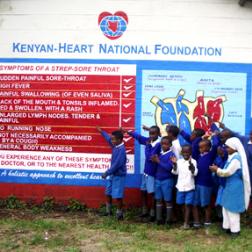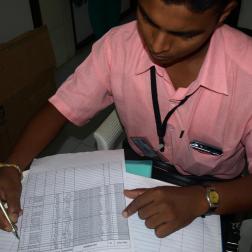RHD Registers
A disease register is a list of people who have been diagnosed with, or are suspected of having a disease. ARF/RHD registers - a list of people with RF/RHD and some of their clinical details - were established in the United States in the 1950s. These registers supported delivery of newly developed regimes for antibiotic secondary prophylaxis and contributed to the declining burden of RHD in the USA. By the 1970s the WHO had adopted a register based approach and registers remain a critical part of RHD control. Register based programs have assisted with the provision of prophylaxis in many communities across the world.
An ARF/RHD register can assist with routine assessment and surveillance, the recording of prophylaxis delivery, the recall of patients who are due or miss doses of BPG, and improve health education and health promotion programs. Registers also provide some information about the burden of disease; though the quality of data is dependent on the quality of register management.
Establishing a register
Minimum data set
A basic minimum register data set for RHD control programs is soon to be published – sign up for our newsletter to be updated when new RHD control information is available. Other sample register databases are available from the World Heart Federation. Some programs have established their own data standards.
Some programs choose to include factors relevant to primordial prevention on registers, including socioeconomic indicators, children in the family or other details. Even when it’s not possible to demonstrate causation, understanding the demographic and socioeconomic characteristics of people presenting with RF/RHD is helpful for targeting services and intervention for primordial prevention.
Identifying existing cases of people living with RHD who need to be added to a new register
Most hospitals record the admission or discharge diagnosis of inpatients. Reviewing these records can provide a guide to the number of cases of RF and RHD in a community. Hospital data will tend to underestimate disease frequency because only people who present to health services and are admitted will be recorded – potentially missing people who are unable to access health care, or when symptoms are too mild to seek medical aid. Alternatively, tertiary or specialist hospitals often accept patients from a larger geographic area than local health services. This may cause an overestimate of the burden of disease. It is helpful to know what proportion of the hospital patients come from your target population/denominator. Understanding the frequency of RF and RHD in hospital/tertiary settings is also valuable for estimating costs of caring for a population with a high burden of RHD.
In some places injections delivered by a health centre or hospital are recorded in an ‘injection book’. It may be possible to identify people already receiving secondary prophylaxis antibiotic injections from these books or other records of care delivery.
Disease notification records may also be important for establishing or maintaining a new RHD register.
Privacy, confidentiality and data security
Use, ownership and protection of health data are complicated issues worldwide. Many settings have struggled to establish protocols to manage confidential health information. For RHD registers privacy requirements may influence which data is collected and how it can be used. It is helpful to seek advice as early as possible when establishing or running an RHD register to ensure that your program complies with local laws, standards and procedures. You may need to seek input from ethics committees, health authorities or other register based programs. Data which is accidently collected inappropriately (without sufficient consent or safeguards) may not be able to be used.
Education and training
Staff will require training to use and maintain the RHD register. The more complicated the system the more time it will take for people to become familiar with it. Integrating the register within existing systems will limit the number of systems new and visiting workers will need to become familiar with using.
***Table to go here***





